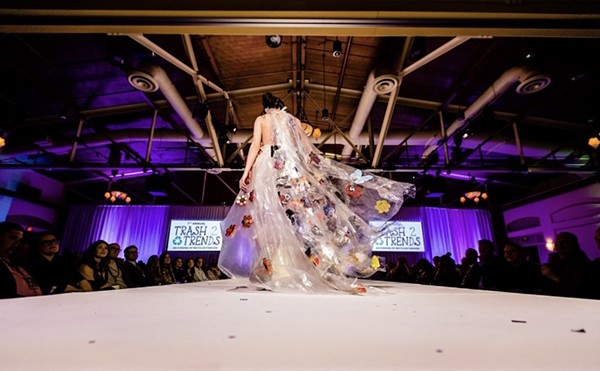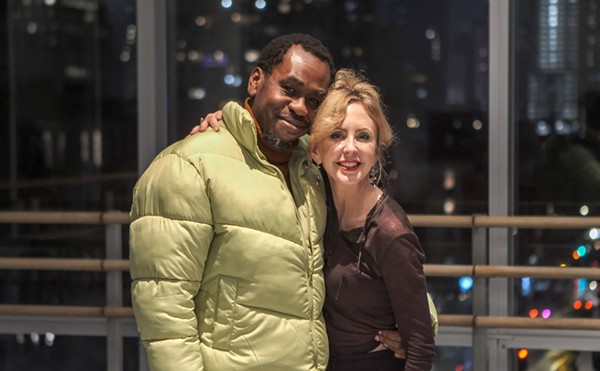The comic strip, on its face, is a crude form of communication and an even cruder form of expression: little boxes, filled with rough dialogue and rougher caricatures. The world of fine art refuses to claim the comic strip, no doubt due to its perceived grubby newspaper origins; besides, the form is too narrative for the painters and too visual for the writers.
Yet there is nothing inherent in the structure of the comic strip that necessitates crudity. The juxtaposition of picture and text can add resonance and depth; the relatively rigid gridlike form can, like a camera in the hands of an auteur, direct the gaze of the audience to detail, form and texture, and force that gaze through the narrative with precisely timed and inexorable progress.
Chris Ware is one of comics' most talented young artists, famed for the meticulous, architectural precision of his drawing, his simultaneously loopy and brutal stories, and a mind-boggling eye for detail: Ware is to the comics medium what Eisenstein and Kurosowa were to the cinema. "Jimmy Corrigan: The Smartest Kid on Earth" is his magnum opus, an elaborate, nearly-400-page bildungsroman that spills out onto the endpapers and the folded, poster-sized two-sided dust jacket. Despite the volume of tiny panels, rambling digressions and cutout toys, every word, every picture, every detail lingered over either deepens character or advances the story of the hapless title character.
"Jimmy Corrigan" is a shy, lonely, middle-age man living in Chicago. A letter from his long-estranged father draws Jimmy from the city toward a reunion that will open up wounds that have spanned three generations. The stories of Jimmy's great-grandfather, grandfather and father weave in and out of each other; at times, only context reveals which Jimmy Corrigan we are reading about. The history of the Corrigan males is played out from Chicago's Colombian Exhibition of 1893 to the steadily deadening world of the modern Midwest. Each has clung to visions of the past in order to face a heartless present; all have been nearly crippled by loneliness, cruelty and a bathetic need to be liked. Jimmy's meeting with his father, who needs his son's approbation as strongly as his son needs his, raises the possibility of a family for the first time; the revelation that Jimmy has an African-American half-sister raises the stakes on that possibility.
In each iteration of Jimmy's life, we see very few faces and virtually none from outside Jimmy's family: Only children and a handful of adults (seen from a distance) have held Jimmy's eye. This isolation translates so smoothly onto the page that most readers may never notice it, but it adds disquiet to the otherwise elegiac pacing, structure and mood of the book. Tiny panels, each contributing to geometrically balanced individual pages, slow the pace of the story and force the reader to pause with Ware over details: a yellowjacket on a windowsill, an uneaten meal, the ambient sounds that rise to fill awkward silences.
Ware shows no mercy; he dissects his sad little man's desperation coldly and dispassionately, leading to a stunning 72-page sequence that pulls the pieces of the story together and tears them up before Jimmy's unbelieving eyes. The silent, gray winter that Jimmy returns to is heartbreaking: There are no more superheroes to leap from the tall buildings, no more fantasies, no more past to cling to, and each flake of snow is painstakingly drawn against the empty buildings.
"Jimmy Corrigan" is a significant book, not just a significant comic book (I refuse to ghettoize it by calling it a "graphic novel"). Yet it is a comic, and that form -- and Ware's masterful handling of it -- is what gives Jimmy Corrigan such power. There's a reason Jimmy Corrigan is a comic strip and not a novel or a film; comics are uniquely suited to telling a story that is static, oblique, dependent largely on visions of the past and characters with a tendency to deflect emotions onto objects. By juxtaposing a visual narrative comprised of austere, elegantly lined pictures against the realistic, fractured nondialogue of people trying to meet across vast emotional space, Ware manages to create an effect that is both highly stylized and transparent, at once guiding the reader's gaze while leaving her alone and uncomfortably omniscient.
Ware, whose diction and style seem a product of early-20th-century advertising, has expanded the limits of the comic strip by recognizing those visual and narrative devices particular to it. In a way, he reminds me of Jimi Hendrix, the first person to recognize that an electric guitar was a fundamentally different instrument than an acoustic guitar. Hendrix forever altered the nature of the electric guitar; I suspect Chris Ware could forever change the nature of the comic strip.
















